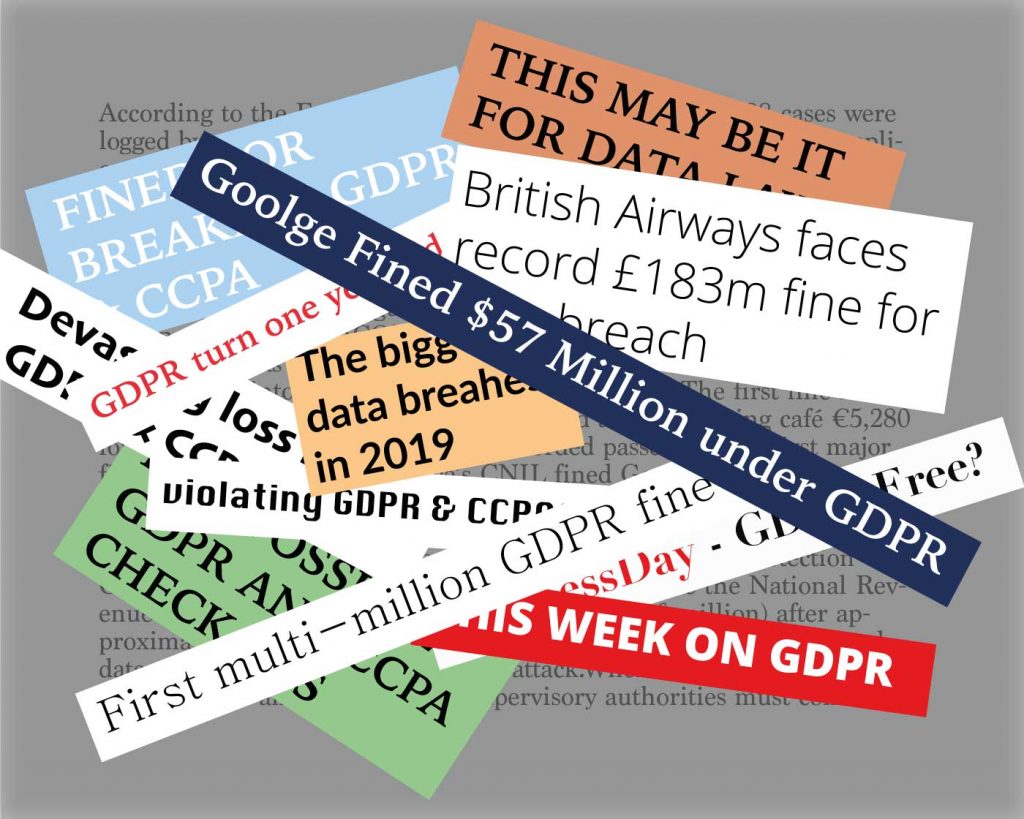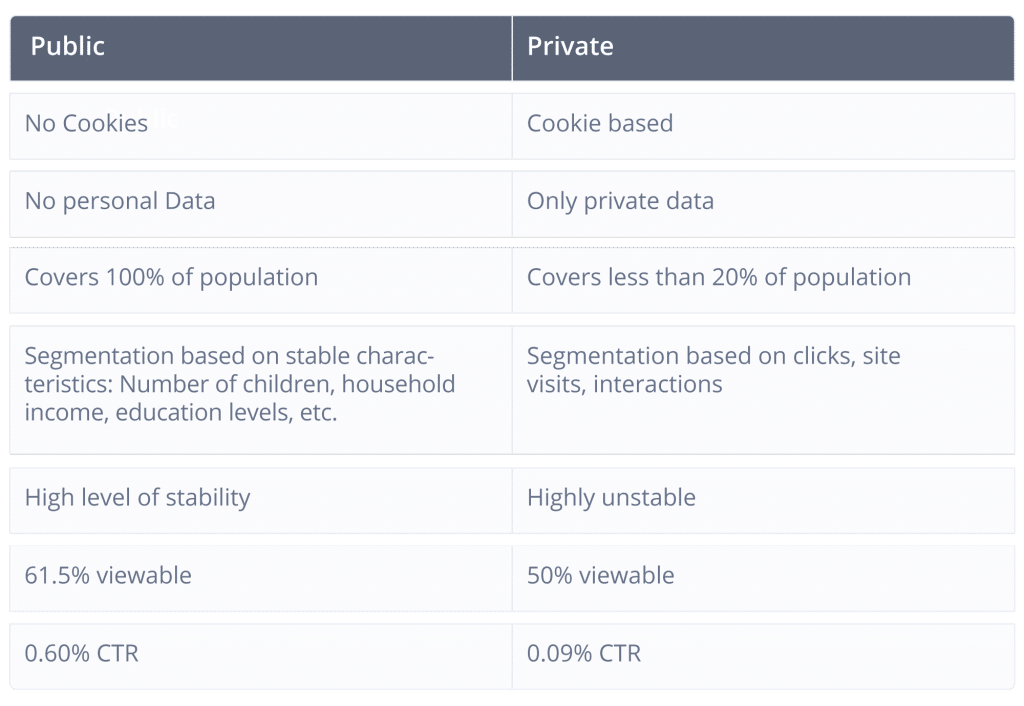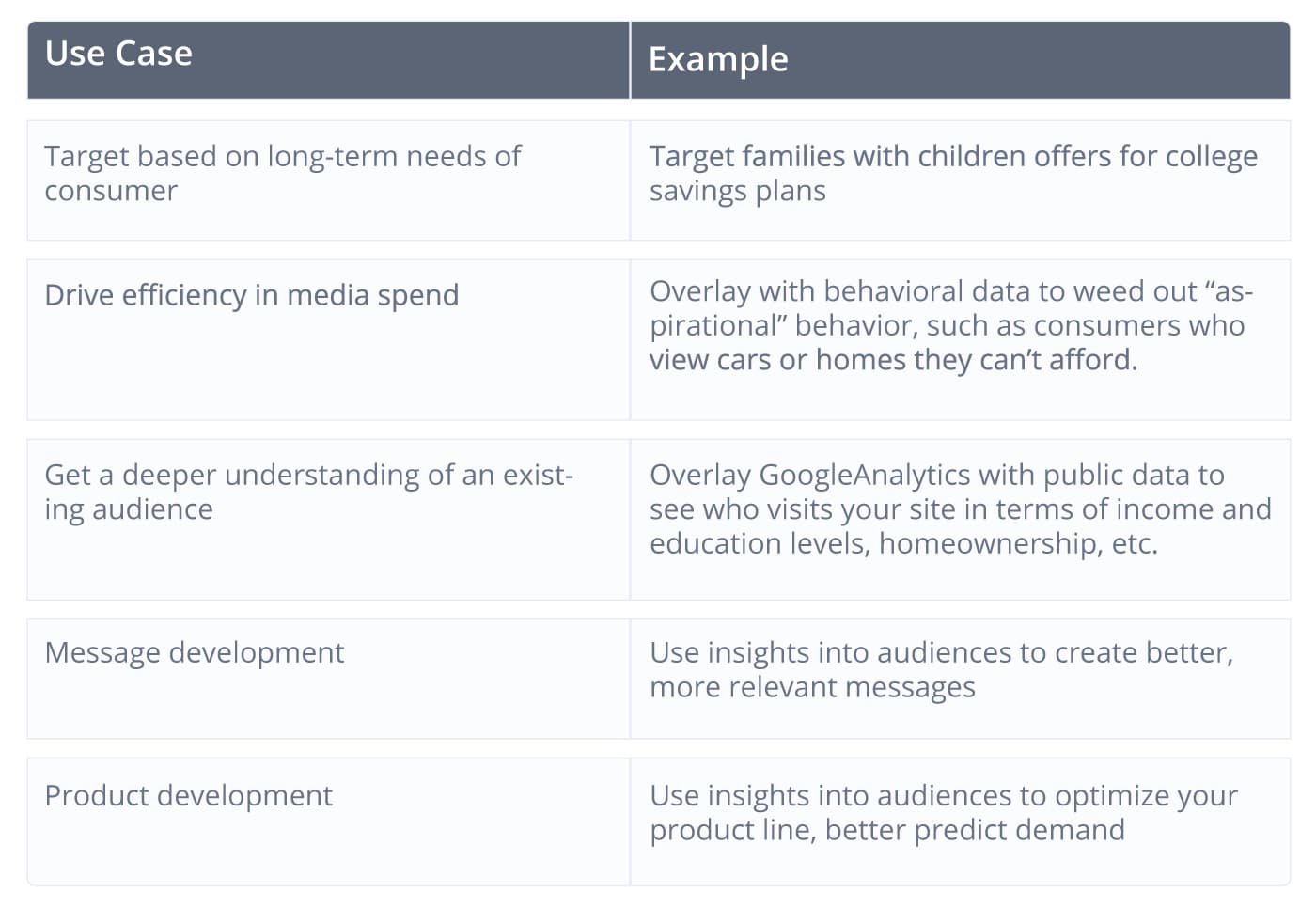Public vs. Private Data Guide
The General Data Protection Regulation (GDPR) and California Consumer Privacy Act of 2018 (CCPA) upended the third-party behavioral data market. All at once, tactics used by digital marketers over the past 15 years are full of risks.
The industry has responded by creating systems that hash PII data so that it is anonymized, but that’s not enough for many advertisers. Their legal departments, in an attempt to mitigate risk, scrutinize contracts and place new requirements for compliance.

The result is a process that is both onerous and full of delays.
The writing is on the wall: the digital advertising ecosystem needs to find an alternative to private data when targeting audience, assessing behavior, and measuring performance.
II. What is Public Data?
Public data is all the data that’s gathered, vetted, maintained and anonymized by National Statistics Offices across Europe and the U.S. There are two key characteristics of public data, namely that it is highly reliable and that it is highly stable.
Behavioral data, which is the bulk of most third-party data, is neither reliable nor stable.
A person may have visited a site for used cars, but that doesn’t mean he or she is actively in the market. And once a person buys a car, he or she is no longer an “auto intender.”
Public data covers long-term characteristics of people: number of children in the household, household income, homeownership vs. renters, number of cars in the household, education level, level of technical sophistication.
III. Public Data Characteristics
Public data highlights overall and long-term needs of a consumer. For instance, a consumer who lives in a large stand-alone home has very different needs than one who rents a small apartment. The purchasing behavior of a single woman is nothing like that of a mother with three children.
Public data is also the most comprehensive data available, covering 100% of a country’s population. And because it comes from the National Statistics Offices, it doesn’t rely on cookies or scripts technology, which is frequently blocked by devices or browsers, anyway.
And it works equally well for desktop, in-app, mobile and video. Most importantly, public data is inherently GDPR and CCPA compliant. The National Statistics Offices aggregate data and place strict discretion criteria that must be met before it is even released to companies like Digiseg.
IV. How Digiseg Applies Public Data to Digital Ad Campaigns
Step 1: First we created a map of the Internet infrastructure of a market – cable and lines, cell phone infrastructure. We then fed this data into a proprietary geo-precisioning engine in order to segment markets into precise geo-locations.
Step 2: We overlaid over characteristics of each neighborhood to each geo-location, including income, education levels, marital status, number of children in the household, number of cars per household, and so on.
Step 3: We integrated our audience data segments with the major DSPs. As bids come in, we match the IP of the user to the proper geo-location described above.
Step 4: When bid request comes in, Digiseg’s proprietary algorithms assess the characteristics of the user, and submits a bid for an ad only if the user meets campaign criteria.
Note: Any advertiser or technology provider can add Digiseg audience segments to any digital source without adding personal identifiable information to that source.


VI. Benefits of Public Data
Inherently GDPR compliant • The legal department does not need to approve its use • Use and restrictions are covered by the data provider Combines scale and precision • Covers the population • Segments within neighborhoods Delivers fast insights • With just 300 clicks get a significant view of who interacts with your banners, points of interest on your webpage or users of your IoT Higher viewability • Tech level segmentation allows you to target consumers who are less likely to be multitasking and have a greater chance of viewing an ad Strong results • Higher CTR, verified by Adform • Stronger viewability, verified by tier-one media agencies.
